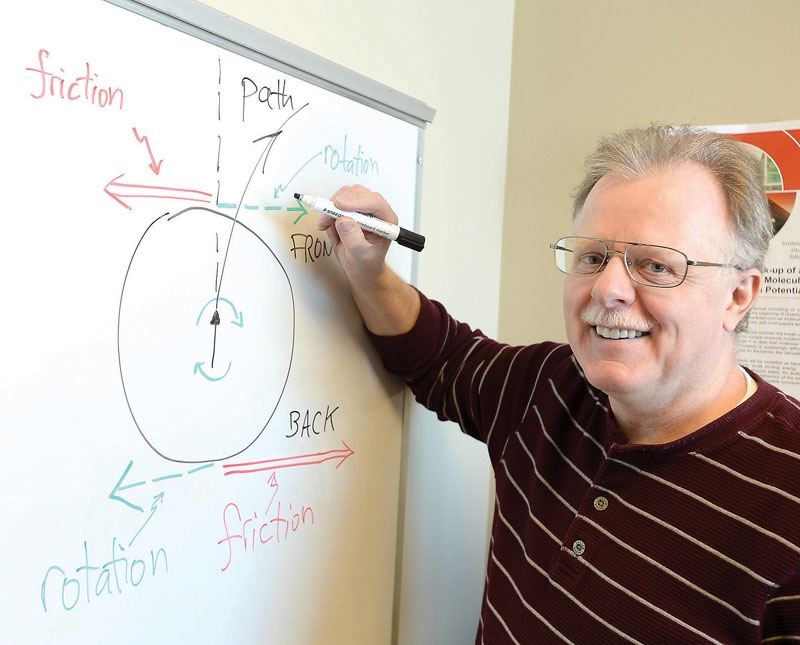The ice at the Prince George Golf and Curling Club was transformed last month into championship conditions for the women's provincial championship, but a UNBC physics professor believes he has a way to make curling club ice swingy all of the time.
Mark Shegelski holds a patent for a curling stone with a wider diameter running band, which his experiments have shown would give regular club players the chance to experience the same amount of curl as their elite-level counterparts.
"It makes the game more exciting," he said of the extra curl. "There are shots you just can't get [without the curl]."
Ice technicians have long been able to manipulate conditions to give stones more curl for championship events like the the B.C. Scotties recently held in Prince George or the Tim Hortons Brier starting this weekend in Kamloops. But the amount of work involved to maintain that extra curl isn't practical for most curling clubs, so club ice ends up being straighter.
Through experiments conducted a decade ago at the Prince George Golf and Curling Club,
Shegelski found that by simply changing the diameter of the running surface of the stone, he could get the rocks to act the way they do at championship events without the more labour intensive changes to ice conditions.
"We could make these rocks with greater radii and get more curl, which is something I thought the curlers really wanted in the game," Shegelski said.
Curling stones aren't completely flat on the bottom, rather they slide down the ice on small running bands of roughened granite. Shegelski tested different diameters for the running bands, from all the way at the outer edge of the stone to those closer to the middle of the rock. He eventually found one that he believes is ideal and had a prototype made and tested. The experiments validated his theory.
"I have a rock that constantly curls more than a regular curling rock," he said.
Although he has a proven technology, Shegelski has stopped short of commercializing his rock design because studying the physics of curling isn't his main research focus, rather it's something he does for fun.
Before his stone design can be adopted, he said more research needs to be done to ensure the stones maintain their curl over time and are practical for club curlers to use.
"You'd have to make 16 of these rocks and try them out at curling club for at least a full season and then see if other people at other rinks would be interested to do that in other rinks and curling clubs across Canada," he said.
He's hoping someone else with an interest in the subject will pick up on the work he's already done and further develop the new stone design.
"I still have the hope that we might eventually get these larger diameter running bands made and used in curling clubs by recreational curlers and they would have more curl," he said.
Shegelski first became interested in the physics behind why rocks curl the way they do when he began playing the game as a graduate student at UBC. He began his research into the subject shortly after getting hired by UNBC in 1994.
Over the years he's collaborated with some colleagues and students and has developed a theory on why rocks curl on pebbled ice. He said the friction created by the stone moving down the sheet creates a very thin layer of water on which the stone spins.
His theory has correctly proven that a rock thrown with a slow speed and rapid rotation will stop sliding before it stops rotating and that under certain conditions a rock can be made to curl away from you and then eventually continue to curl so much that it will come back towards you.
"When you're a theorist and you predict something like that and it happens, that's a real thing to celebrate," he said.
However there are still gaps in the science that Shegelski believes further study. For instance his experiments showed that if the curling pebble is removed from the ice, the rocks curl up to three times more and his theory doesn't fully account for why that's the case.
Shegelski is now considering going back to his 2003 experiment data to answer the questions that remain. He has come up with some ideas to add to his theory, which he hopes will more fully account for the rock's behaviour on all surfaces.
"The theory is successful, but the trouble is there are still things that it doesn't answer," he said. "In science the rule is your theory doesn't get to be the theory until it answers everything."



